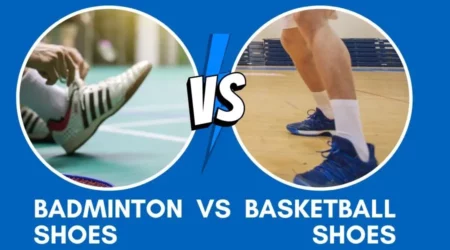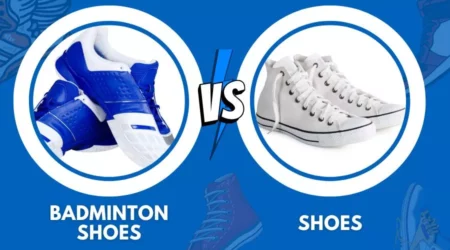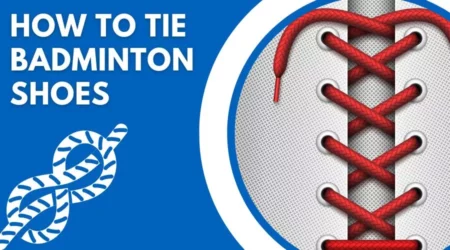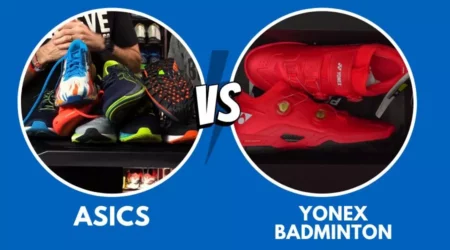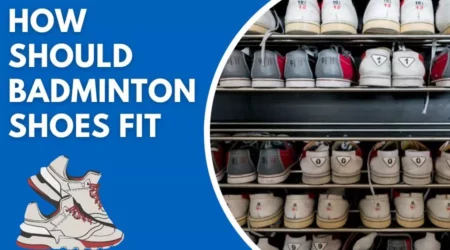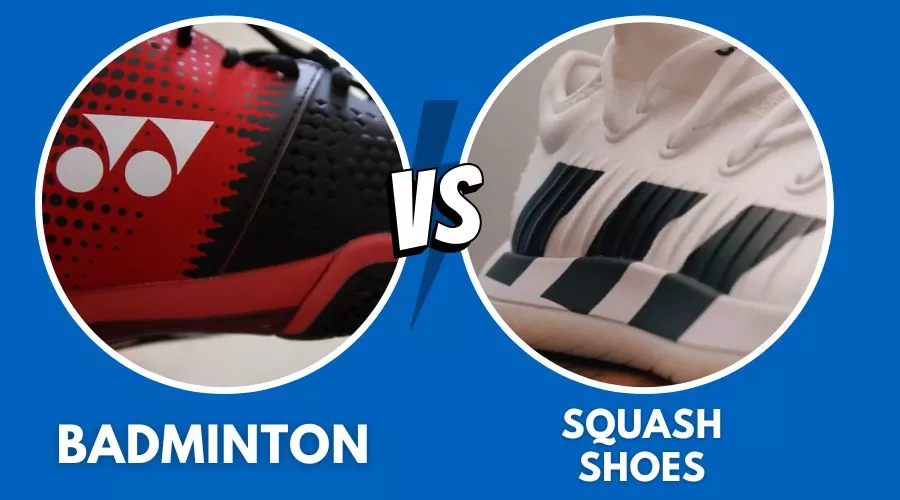
Badminton and squash are fast and furious-racquet sports with very different rules and playing styles. But like all great athletes, these two racquet sports have one thing in common: They require fast feet!
These two racquet sports badminton & Squash also require players to sprint back and forth between the front wall of the court for each point. That’s where footwear comes in.
Badminton shoes help you run faster, jump higher, pivot quicker on the court, and give you greater traction to avoid slipping when accelerating or changing directions.
Squash shoes, on the other hand, can make you slower because they have less grip than badminton shoes which means that every step counts for more. Let’s find out why..
What makes a good badminton shoe?
Choosing Badminton shoes which have as many features as you like, but at the core, they need to be fast.
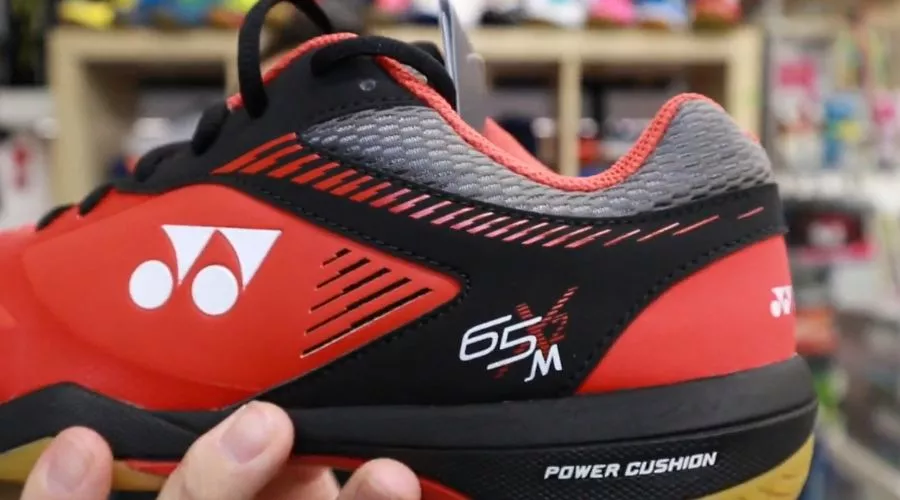
The best badminton shoes are designed with a low center of gravity (more on that below) which helps you to change direction quickly on the court and stay stable while doing so.
Badminton shoes also tend to be stickier than squash shoes and have a lot more traction on the soles, which helps you to accelerate quicker and stay in control when changing direction.
Badminton shoes are lightweight and breathable to help you maintain consistent speed and keep your feet fresh for the whole match.
The playstyle of Badminton And Squash
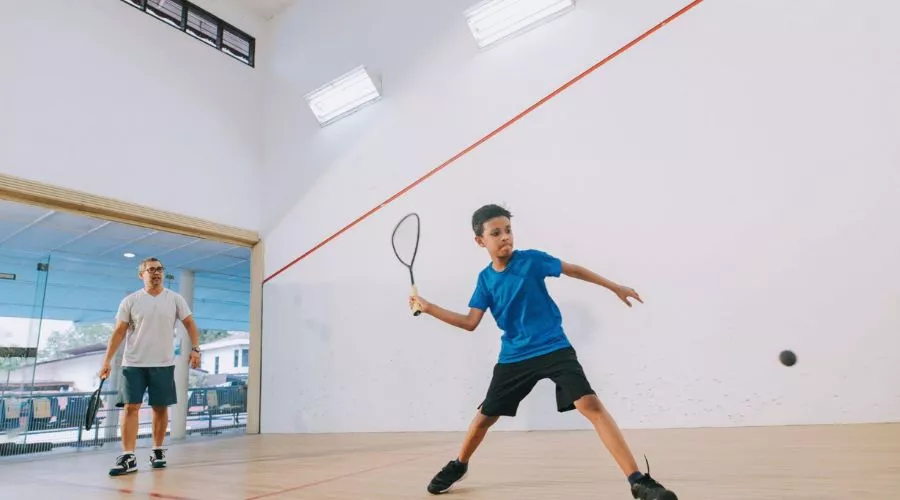
Badminton is a fast game full of quick stops and starts, lung-busting sprints, and sudden direction changes.
A typical match is played over a series of best-of-three games, with each game lasting just a couple of minutes.
In squash, the pace is just as relentless, but players stay in their own half of the court for the game’s duration, with no change of ends.
To cope with these very different demands, badminton players tend to wear light, flexible, low-top shoes with a low center of gravity, lightweight and breathable upper materials, and a low-profile outsole.
Squash players, on the other hand, tend to wear heavier, sturdier, high-top shoes with a raised heel and a durable outsole.
Flexibility
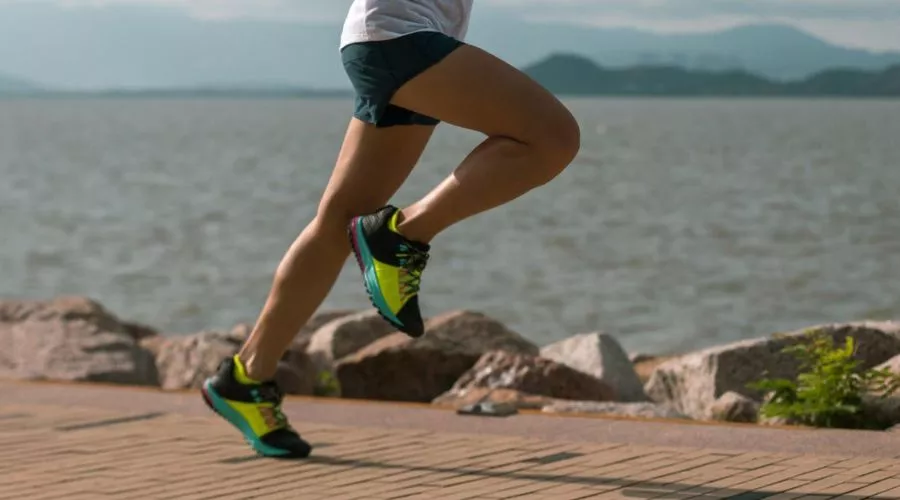
Badminton shoes are designed with a low-cut upper that offers less support than squash shoes and are therefore better suited to the faster and more agile game of badminton.
Badminton shoes are usually made with a thin synthetic material for the upper for lightweight and flexible support.
Soles of Badminton shoes are made with less cushioning than squash shoes and are thinner and more flexible to provide better court feel and traction.
Squash shoes are heavier and more rigid than badminton shoes, offering more support and ankle stability for the slower-paced and more static game of squash.
The soles of squash shoes are made with more cushioning than badminton shoes for extra comfort and shock absorption.
Soles
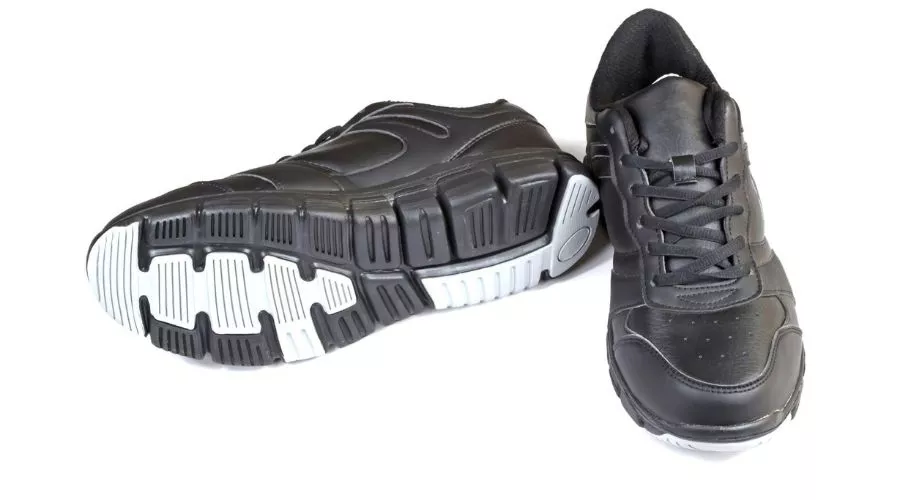
Badminton shoes are built with a low-profile outsole made from a thin and lightweight material like EVA.
This helps to maximize the amount of surface area contact with the floor as well as give the shoes a low center of gravity allowing you to pivot quicker on the court.
Squash shoes are made with a thicker outsole made from a lightweight material like EVA or TPU.
This provides better traction and durability on the court to help you maintain consistent speed and control when changing direction.
Cushion
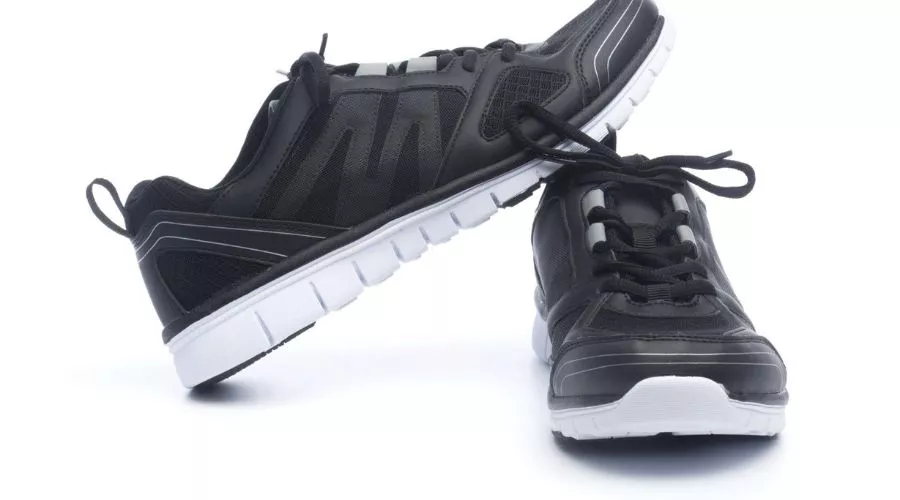
Badminton shoes are usually made with a thin synthetic material for the upper for lightweight and flexible support.
Soles of Badminton shoes are made with less cushioning than squash shoes and are thinner and more flexible to provide better court feel and traction.
Squash shoes are heavier and more rigid than badminton shoes, offering more support and ankle stability for the slower-paced and more static game of squash.
The soles of squash shoes are made with more cushioning than badminton shoes for extra comfort and shock absorption.
Better traction
Badminton shoes tend to be made with an outsole made from a thin and lightweight material like carbon rubber or FTS (Friction Textured Soles) to provide a consistent level of traction and grip across all court surfaces.
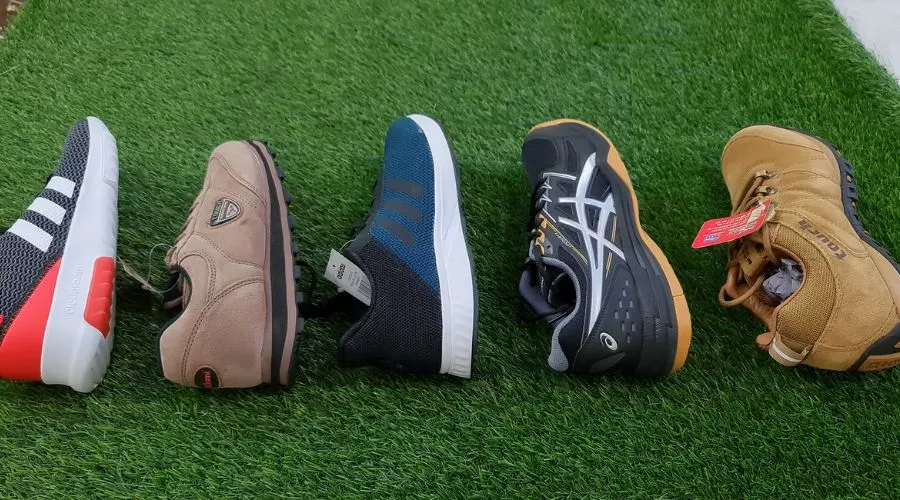
Squash shoes are made with a thicker outsole from a material like TPU or ethylene vinyl acetate (EVA) to provide better traction on the court.
Stability and support
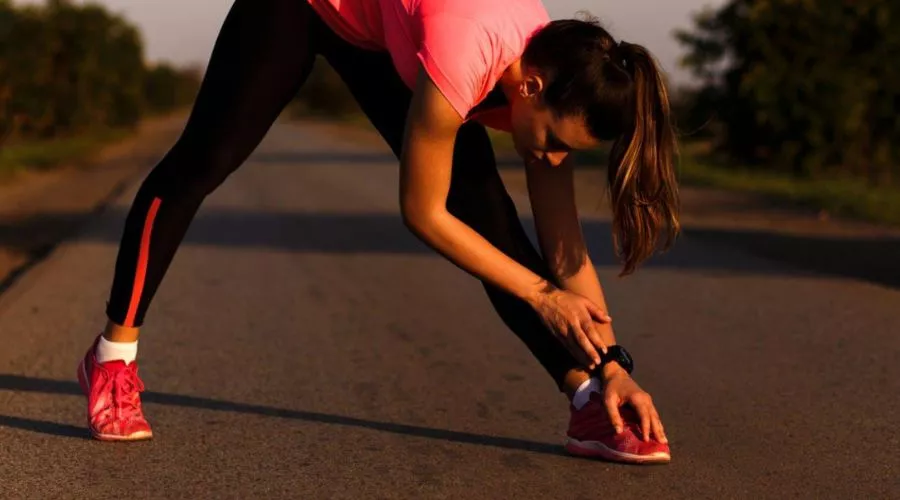
Badminton shoes tend to be made with a low-cut upper that is built with synthetic material for lightweight and flexible support.
Soles of Badminton shoes are made with less cushioning than squash shoes and are thinner and more flexible to provide better court feel and traction.
Squash shoes are heavier and more rigid than badminton shoes, offering more support and ankle stability for the slower-paced and more static game of squash.
The soles of squash shoes are made with more cushioning than badminton shoes for extra comfort and shock absorption.
Speed and agility

Badminton shoes are usually made with a thin synthetic material for the upper for lightweight and flexible support.
Soles of Badminton shoes are made with less cushioning than squash shoes and are thinner and more flexible to provide better court feel and traction.
Squash shoes are heavier and more rigid than badminton shoes, offering more support and ankle stability for the slower-paced and more static game of squash.
The soles of squash shoes are made with more cushioning than badminton shoes for extra comfort and shock absorption.
Low Center of Gravity
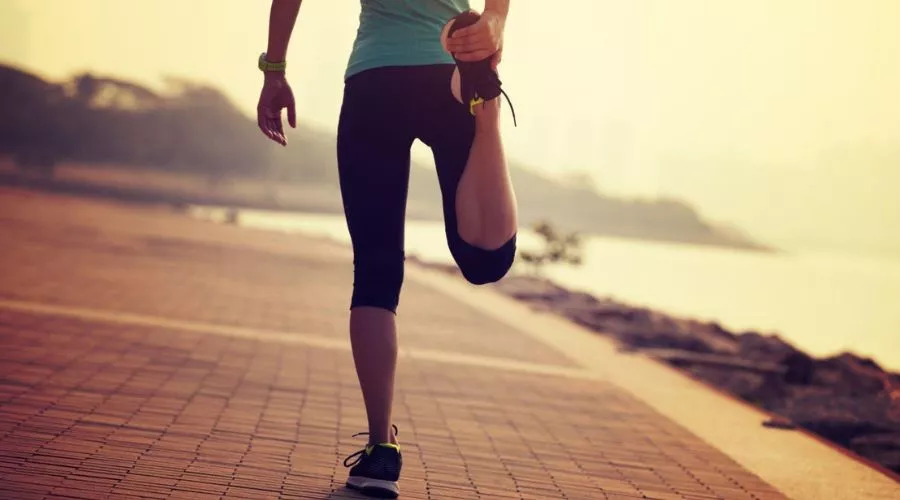
Badminton shoes are built with a low-cut upper that is built with synthetic material for lightweight and flexible support.
This helps to maximize the amount of surface area contact with the floor to give the shoes a low center of gravity, allowing you to pivot quicker on the court.
Squash shoes are heavier and more rigid than badminton shoes, offering more support and ankle stability for the slower-paced and more static game of squash.
The soles of squash shoes are made with more cushioning than badminton shoes for extra comfort and shock absorption.
Shock Absorption

Badminton shoes are usually made with a thin synthetic material for the upper for lightweight and flexible support.
Soles of Badminton shoes are made with less cushioning than squash shoes and are thinner and more flexible to provide better court feel and traction.
Squash shoes are heavier and more rigid than badminton shoes, offering more support and ankle stability for the slower-paced and more static game of squash.
The soles of squash shoes are made with more cushioning than badminton shoes for extra comfort and shock absorption.
Which shoes are used for squash?
The most important thing when choosing squash shoes is that they are comfortable. You will be spending a lot of time in them, so it’s important that they fit well and are supportive.
These are the things to look for when choosing squash shoes:
- Width: Since the feet do not move in squash shoes, it is important to choose ones that are wide enough. This will prevent blisters and give you more comfort.
- Cushioning: Cushioning is vital in squash shoes since you will be spending a lot of time on your feet. The cushioned insoles can help prevent foot pain during long matches.
- Fit: Squash shoes should fit snugly but not too tight. They should stay on your foot without being too loose or loose and falling off.
- Material: The material used in the shoe is also important, as it will come into contact with your foot the most. Leather is popular for its durability, while synthetic materials are generally easier to maintain.
FAQS
Can I wear squash shoes for badminton?
No, Squash shoes are designed specifically for the sport of squash. They provide superior grip and traction to players while also keeping their feet dry during play. There are several brands available on the market that produce shoes specifically for squash players, including Asics, Diadora, and Adidas.
What is special about squash shoes?
By wearing squash shoes, you are giving yourself the best advantage in the racquet sport of squash. Being lightweight and breathable, squash shoes provide you with comfort and durability. With an antimicrobial footbed and patented heel stability, squash racquets are the most comfortable and supportive shoes on the market.
What is the difference between badminton shoes and sports shoes?
The main difference. Is that badminton shoes are made from leather and have holes in the soles for extra grip on the court. Sports shoes are not as robust and tend to be made of synthetic materials, so they can be worn outside the court, whereas Badminton are designed exclusively for badminton and specifically for inside the court. A pair of Badminton is sturdy, light, and very comfortable.

